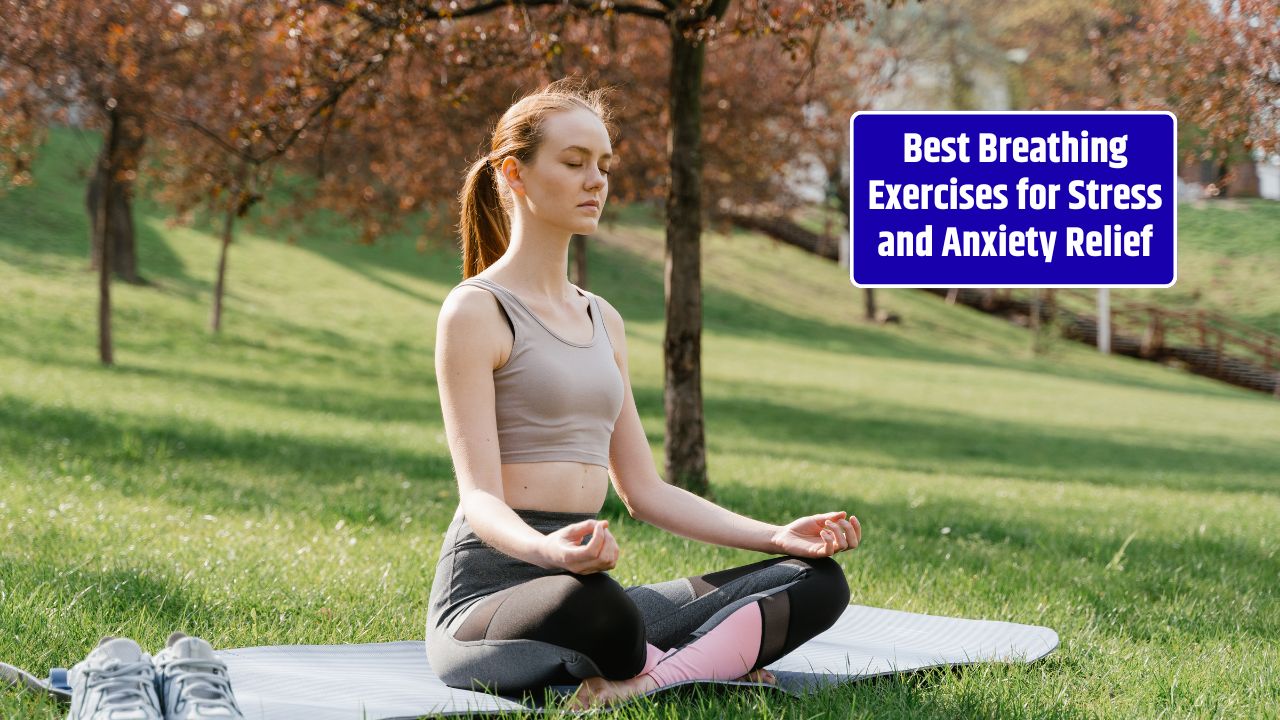If your chest has ever felt tight during a stressful moment, or your mind started racing faster than your ability to keep up with it, you already know how closely breathing and anxiety are connected. The way we breathe signals our body to either ramp up into fight-or-flight mode or calm down into rest-and-digest. The good news? With a few intentional techniques, you can flip that switch yourself. Breathing exercises are free, quick, and scientifically backed as one of the most effective ways to manage stress and anxiety on the spot.
Why Breathing Works for Stress
When we’re anxious, we tend to breathe fast and shallow, pulling more air into the chest instead of the diaphragm. This keeps the nervous system on high alert. Slow, controlled breathing does the opposite—it activates the parasympathetic nervous system, lowering heart rate, reducing cortisol, and sending the brain a message: you’re safe. According to the American Institute of Stress, simple breathwork can cut stress levels in minutes.
1. Box Breathing (a Navy SEAL Favorite)
- How: Inhale through the nose for 4 counts → hold for 4 → exhale through the mouth for 4 → hold for 4.
- Why it helps: The structured rhythm is grounding and slows down racing thoughts.
- Best time: Before a big presentation or when panic starts creeping in.
2. 4-7-8 Breathing (The Sleep Trick)
- How: Inhale quietly through the nose for 4 counts → hold for 7 → exhale with a “whoosh” for 8.
- Why it helps: Developed by Dr. Andrew Weil, it acts like a natural tranquilizer by lengthening exhalation.
- Best time: At bedtime or when anxiety makes it hard to switch off.
3. Diaphragmatic (Belly) Breathing
- How: Place one hand on your chest, the other on your belly. Inhale deeply through your nose, letting the belly rise. Exhale slowly through pursed lips.
- Why it helps: Engages the diaphragm, slows breathing rate, and boosts oxygen exchange.
- Best time: During daily practice, or whenever you notice shallow “chest breathing.”
4. Alternate Nostril Breathing (Nadi Shodhana)
- How: Using your thumb, close the right nostril and inhale through the left. Close both nostrils briefly, then exhale through the right. Switch sides.
- Why it helps: An ancient yogic technique that balances the nervous system and calms the mind.
- Best time: Midday reset when you’re overwhelmed or mentally scattered.
5. Resonance Breathing (Coherent Breathing)
- How: Inhale for 5–6 seconds, exhale for 5–6 seconds, maintaining about 5 breaths per minute.
- Why it helps: Synchronizes breathing with heart rhythms, lowering blood pressure and stress hormones.
- Best time: Daily practice, especially for chronic stress management.
6. Lion’s Breath (for Tension Release)
- How: Inhale deeply through the nose, then exhale forcefully through the mouth while sticking out your tongue and roaring softly.
- Why it helps: Releases physical tension in the face and jaw while boosting energy.
- Best time: When stress feels physically “stuck” in your body.
Quick Reference Table
| Technique | How Long It Takes | Best For |
|---|---|---|
| Box Breathing | 1–2 minutes | Anxiety spikes, quick calm |
| 4-7-8 Breathing | 3–5 minutes | Sleep, winding down |
| Diaphragmatic Breathing | 5 minutes | Daily practice, general stress |
| Alternate Nostril | 3–6 minutes | Focus, balance, mental clarity |
| Resonance Breathing | 10–15 minutes | Chronic stress, blood pressure |
| Lion’s Breath | 1 minute | Physical release, energy reset |
Making It a Habit
The biggest mistake people make? Only using these techniques when stress is already sky-high. Practicing a few minutes daily—during commutes, coffee breaks, or right after waking—trains your nervous system to stay calmer overall.
FAQs:
How quickly do breathing exercises work?
Often within minutes. Even 5 slow breaths can lower heart rate and reduce tension.
Can I overdo breathing exercises?
Not really, but some (like 4-7-8) can make you lightheaded if repeated too often in one sitting. Moderation is key.
Do I need to sit in meditation to practice?
No. You can practice at your desk, on a walk, or lying in bed. Posture helps, but formality isn’t required.










